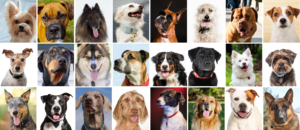To best understand this article in the context of the Breeds and Behavior literature, please see National Canine Research Council’s complete analysis here.
Udell, M. A. R., Ewald, M., Dorey, N. R., & Wynne, C. D. L. (2014). Exploring breed differences in dogs (Canis familiaris): Does exaggeration or inhibition of predatory response predict performance on human-guided tasks? Animal Behaviour, 89, 99-105. doi: https://doi.org/10.1016/j.anbehav.2013.12.012
This study is included because it explores the question of whether predatory action patterns purportedly selected for or inhibited in working lines of various breeds might influence their performance on a test commonly used to measure social cognition.
Udell, Ewald, Dorey, and Wynne (2014) tested 31 pet dogs identified (presumably by their owners although the authors do not specify the means of identification) as coming from working lines of three breeds (Border Collies, Airedale Terriers, and Anatolian Shepherds), but as never having worked in the traditional roles for their breeds. The task was a human-guided pointing/object choice, which is a commonly used measure of “social cognition” in dogs. They hypothesized that following a momentary point from a human (arm moves to point and is then withdrawn) to find food would be a behavior analogous to the inclination to chase moving objects (one of the basic parts of the predatory sequence). They further hypothesized that “working line” Border Collies and Airedale Terriers would have been selected for a heightened tendency to chase and would therefore do better on the pointing task than “working line” Anatolian Shepherds, who would have been selected to inhibit such a response. The results supported this. However, there is no mention of how it was determined that the individuals tested were members of working lines, nor was there any confirmation that these specific individuals had correlating levels of inclination to chase. In other words, there was not confirmation that a human moving and briefly pointing an arm is a surrogate stimulus for a rapidly retreating object that typically elicits chase. The moving arm could also be perceived by some dogs as slightly threatening, which would also explain the lower likelihood of the Anatolians approaching the can closest to the waving arm.
The second part of the study determined that the Anatolian Shepherds could be trained in very few trials to perform as well as the other two breeds on the pointing task. Experiment 2 was identical to Experiment 1 except that instead of limiting the session to 10 trials, the task was repeated until the dog was consistently successful. This level was reached by all the Anatolian Shepherds in 30 trials or fewer. This outcome is consistent with the authors’ predation hypothesis, but the dogs could also simply have learned both that the moving arm indicated the location of the treat and that this now slightly familiar person (the same experimenter was used in both phases) was safe. In any case, this second phase demonstrated that even dogs who were initially unsuccessful at the pointing task could easily learn it, leading the authors to conclude that “failure to engage in behaviour may sometimes occur even when the cognitive capacity for success exists.” Moreover, the authors’ discussion of these results fully acknowledges the possibility that differing owner behavior toward the dogs based on breed expectation, even absent active participation in working tasks, could have resulted in learning that account for some or even all of the differences observed.
https://doi.org/10.1016/j.anbehav.2013.12.012
Page last updated July 22, 2019





